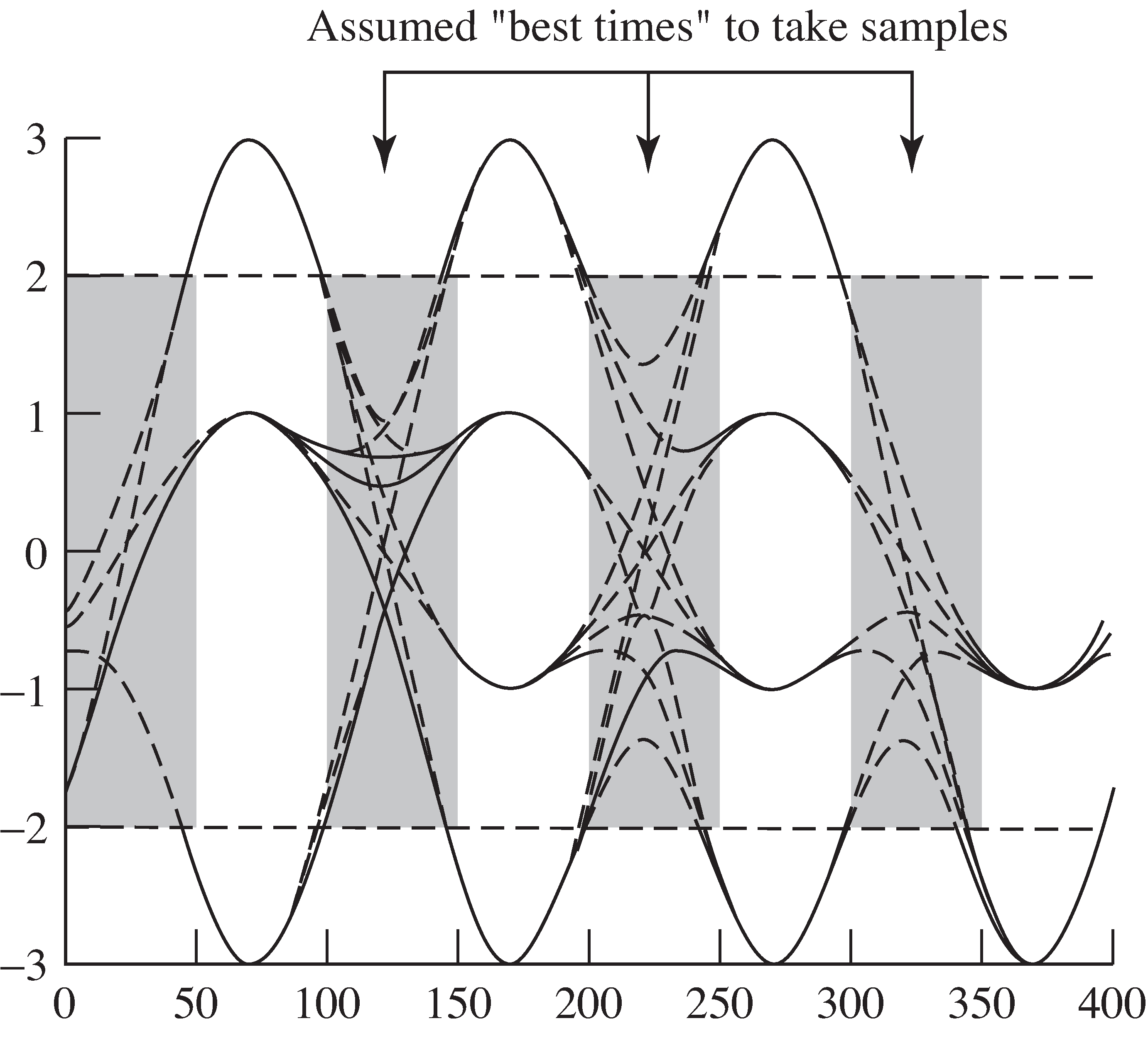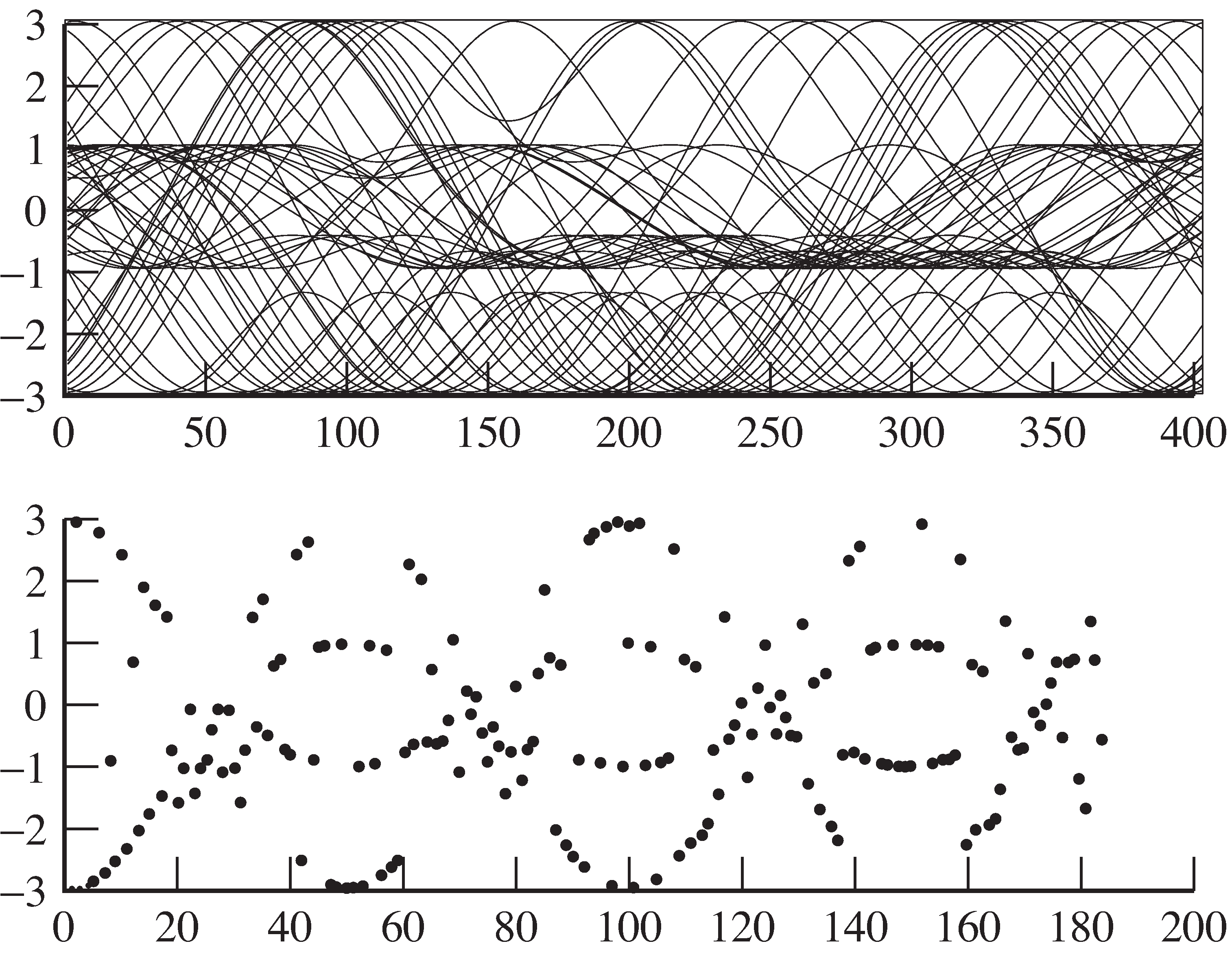| << Chapter < Page | Chapter >> Page > |

When the assumed period of the downsampler is in error, there is no hope.As mentioned in the previous impairment, the receiver believes that the best times to sample are at . When there is a period offset, it means that the valueof used at the receiver differs from the value actually used at the transmitter.
The prompt in
impsys.m for symbol period offset
suggests trying 0 or 1.A response of 1 results in the transmitter creating the
signal assuming that there are
samples per symbol period,
while the receiver retainsthe setting of
samples per symbol,
which is used to specify the correlator filter andto pick subsequent downsampling instants once the
initial sample time is selected.The symptom of a misaligned sample period is
a periodic collapse of the constellation, similar to thatobserved when there is a carrier frequency offset
(recall
[link] ). For an offset of 1,
the soft decisions are plotted in
[link] .
Can you connect the value of the period of this periodic collapseto the parameters of the simulated example?
When stuff happens and the receiver continues to operate as if all were well, the transmitted message can becomeunintelligible. The various impairments of the preceding sectionspoint the way to the next onion-like layer of the design by showing the kinds of problems that may arise.Clearly, the receiver must be improved to counteract these impairments.
Coding (Chapter
[link] ) and
matched receive filtering (Chapter
[link] )
are intended primarily to counter the effects of noise.Equalization (Chapter
[link] ) compensates for multipath
interference, and can rejectnarrowband interferers.
Carrier recovery (Chapter
[link] ) will be used to adjust the phase,
and possibly the frequency as well, of thereceiver oscillator.
Timing recovery (Chapter
[link] ) aims to reduce downsampler timing
and period offset.All of these fixes can be viewed as digital signal
processing (DSP) solutions to the impairments explored in
impsys.m .

Each of these fixes will be designed separately, as if the problem it is intended to counterwere the only problem in the world. Fortunately, somehow they can all work together simultaneously.Examining possible interactions between the various fixes, which is normally a part of the testing phase ofa receiver design, will be part of the receiver design project of Chapter [link] .
While the idealized communication systems in
idsys.m and
impsys.m illustrate the basic operation of a
transmitter-receiver pair, practicalsystems are a bit more complicated. One of the problems is
keeping track of all the problemsthat can arise! In order to help organize all the possibilities,
this section introduces the
Basic Black Box Impairment Generator , or
.
Details
OK. We confess.
[link] does not
contain any details. You can find out how
operates
by peering ahead to Appendix
[link] , but
we really shouldn't mention it at this point. of the operation of the
transmitter are shown in
[link] .

Notification Switch
Would you like to follow the 'Software receiver design' conversation and receive update notifications?